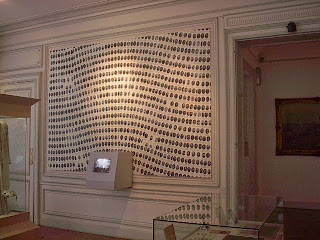Brussels have received a lot of bad press lately but it is still one of the most charming and historic cities in Europe and well worth a visit.
Located on the no. 93 tram line, the Musee BELvue is a museum dedicated to the history of the Belgian Royal Family.
Located on the no. 93 tram line, the Musee BELvue is a museum dedicated to the history of the Belgian Royal Family.
For a combined ticket price of €10, you can visit the dynasty collection and the archaeological dig. I will always remember this museum fondly because of their dedicated staff. Not only were we warmly welcomed when we bought our tickets, but one of the docents spent a great deal of time with us recounting his personal encounters with the Belgian royals.
 |
| #BELvuemuseum |
As you walk the beautiful halls of the palace, you travel on a chronological trip through the brief history of the Belgian Royal House, beginning with Leopold I, who was the Duke of Saxe and Prince of Coburg Saalfed. He was the uncle of Prince Albert and Queen Victoria and husband of Princess Charlotte of England until her untimely death. He married the daughter of the French king two years after he ascended to the throne of Belgium, and so we see that the royal family is not really Belgian at all. You would never guess this by the love that is shown in the Baudouin Memorial.
The museum consists of three parts. The dynasty section has rooms dedicated to each monarch and their spouse. Each of the rooms contains pictures, mementos, and furniture. In the hall is a large genealogical chart where you can place each monarch in his or her correct sequence. On the first floor, there is a very moving video about the funeral of former King Baudouin, as well as a large exhibit covering his reign -- this is the second section. Fascinating as all this is, it pales in comparison to the archeological dig.
Have you ever wanted to walk through the streets of a medieval city? Well, here you can; there are streets and the foundations of buildings located under the museum and under Place Royale. This former palace of the Dukes of Brabant called the Coudenberg, had its beginnings in the 11th century and was destroyed by a fire in 1731. Subsequent building in the area caused it to all but disappear. This is probably the luckiest thing that could have happened because it has been spared total destruction and now can be enjoyed for generations to come. It really is like a city beneath a city and is amazingly large. The streets are cobbled, and some of the streets even have names. It is a fascinating walk through history.



No comments:
Post a Comment